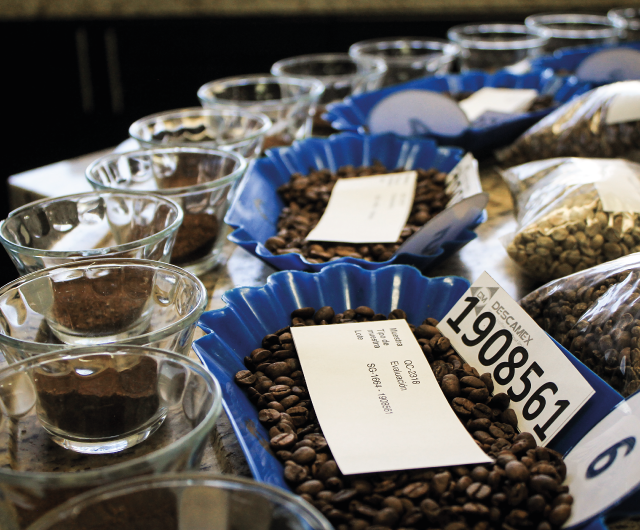
Water-based decaffeination, as exemplified by Descamex, Mexico
To understand water-based decaffeination, we went to meet the Descamex factory in Mexico. It prepares some of our decaffeinated beverages using water, one of the oldest natural methods of decaffeination. Here's how it works.
A short history of water decaffeination at Descamex
Water decaffeination is one of the most respected and widely used methods in the high-quality decaffeinated coffee industry. This process uses a green coffee concentrate composed of water saturated with all the solid components available in green coffee, with the exception of caffeine.
Descamex is one of the world's leading suppliers of decaffeinated coffees. It is the only Mexican company to decaffeinate coffee with water, and has been developing its Mountain Water process since 1980.
At their plant in Cordoba, Mexico, they also decaffeinate coffees using the MC (Methylene Chloride) process. However, we'll concentrate here solely on water decaffeination, which is the process we use with Descamex.
Engineer Luis Demetrio Arandia Muguira of Descamex explains that Mountain Water focuses mainly on three points:
- preparation
- extraction
- drying
The 4 stages of the process
Steam treatment
Descamex processes coffee in batches of 5 tons of green coffee, which are exposed to steam. This step is carried out before decaffeination, and prepares the coffee beans by making them more permeable for caffeine extraction.
Immersion
The coffee is brought into contact with a saturated solution of soluble green coffee solids, excluding caffeine, at a temperature of 60°C. The vacuum tank increases pressure during the process. This will result in an exchange of components during which, according to the principle of osmosis, caffeine will begin to migrate from the coffee into the saturated solution.
This solution, once saturated with caffeine, passes through a carbon-cellulose filter which collects the caffeine. To guarantee the quality of the process, the coffee is exposed to a continuous flow of non-caffeinated solution for 24 hours, until the desired level of caffeine is reached.
Drying process
For approximately 4 hours, the coffee is subjected to various types of drying: (1) pre-drying in a horizontal dryer to rapidly remove excess water, (2) vertical drying at 60°C for 2 hours to bring the coffee to the desired humidity of 10-12.5%, (3) drying in a cylinder at 25°C to bring the temperature of the beans down to room temperature.
Cleaning
Based on a suction and polishing machine, the decaffeinated coffee is cleaned of any membrane residue associated with the process, and is ready for packaging.
La décaféination à l’eau, selon l'exemple de Descamex, au Mexique
Engineer Daniel Robles Muguira told us an interesting fact about Spain. This country is historically considered to be the biggest consumer of decaffeinated coffee.
Culturally, decaffeinated coffee is commonly offered in the catering trade. However, Daniel believes in the accelerated development of high-quality decaffeinated coffee. Although historically often dedicated to inferior coffee qualities, decaffeination processes already have a solid history.
Descamex is now acting to reverse this rumor, because decaffeinated coffee depends on the quality of the process, but even more on the quality of the green coffee that goes into it.
Did you like this article? Share it with your community:
